Under the watchful eye of Daniel Tagoe, a coach from Ghana, about 30 children wearing blue and yellow kits learn to play soccer in a village outside the Kyrgyz capital, Bishkek.
One of several west African players living in Kyrgyzstan, 37-year-old Tagoe says he dreams of developing a soccer culture in the poor Central Asian country.
“My dream is to have them play in English premiership, in Spain, in Russia,” Tagoe told reporters, referring to the young players.
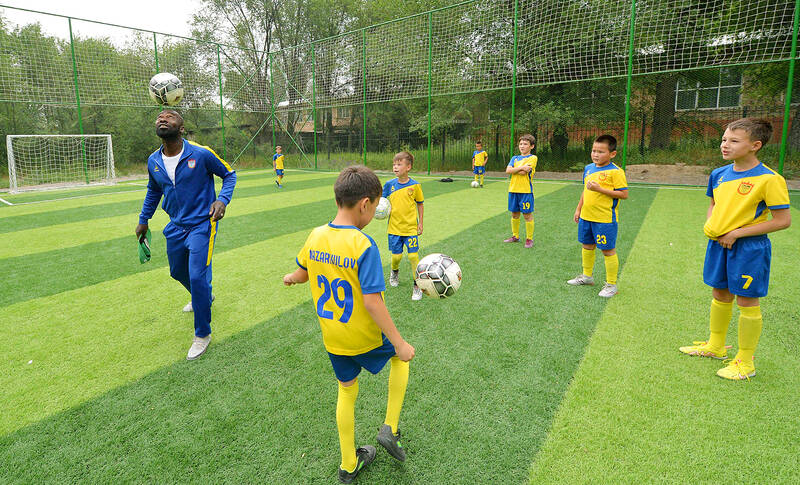
Former Kyrgyzstan player Daniel Tagoe, left, leads a training session for children in Leninskoye, Kyrgyzstan, on Tuesday last week.
It is an ambitious task in a country not known to be a major soccer nation.
Mixed martial arts and wrestling are among favorite sports in Kyrgyzstan and much of the country still lacks adequate sporting facilities.
Tagoe arrived in Kyrgyzstan from Russia when he was in his early 20s and played for the mountainous country’s national side for years. After a successful career that saw him win the Kyrgyzstan Player of the Year award in 2009, the Ghanaian opened a soccer school in the village of Leninskoye outside Bishkek.
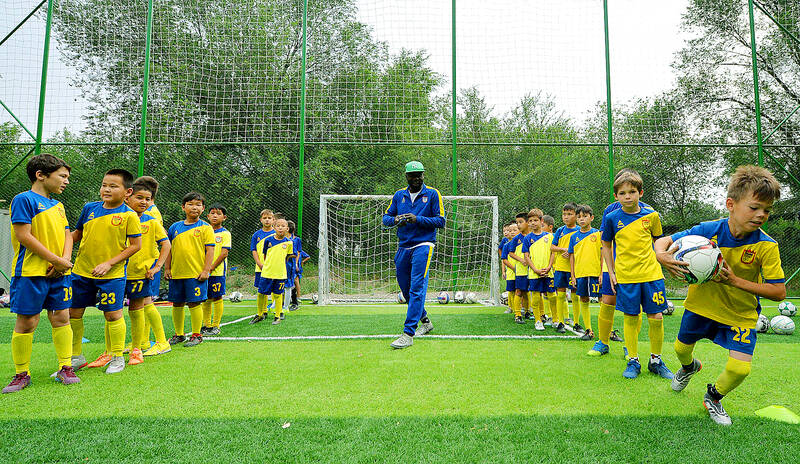
Photo: AFP
“I have my house here. My wife lives here,” he said, adding that a lot of parents asked him to teach their children.
“When I finished my career, I decided, why not teach them?” said Tagoe, a fluent Russian speaker.
Children say they are happy to learn skills from him.
“I am glad that Tagoe came and opened his club,” eight-year-old Daniil Mukhamedaliev said.
He said he lived far away from Leninskoye and had to walk through the fields to attend his classes.
“He’s a good coach,” Mukhamedaliev said.
About 80 aspiring players aged six to 18 have signed up and regularly come to play at the new pitch.
It is next to an elementary school still bearing the name of Soviet state founder Vladimir Lenin and featuring a map of the former Soviet Union on a wall.
Nearby, horses graze in a field where locals played before Tagoe’s arrival and abandoned goalposts have no net.
“We’ve never had anything like this before,” Arzu Jafarova said.
“My son just sat at home,” the 38-year-old added. “Now we are pleased and my child is pleased.”
Another parent, Zamir Jooshev, was equally enthused.
“Not all villages have such an opportunity,” said Jooshev, whose son and daughter are learning to play.
He said it was also rare to have a former Kyrgyzstan national team player train local children.
Along with another Ghanaian, David Tetteh, Tagoe is one of several Africans to have played for the Kyrgyzstan national side.
Their contribution to the country’s soccer successes is indisputable.
In the 2010s, Kyrgyzstan were among the worst teams. With the help of foreign players, including the west Africans, the country has moved up in the FIFA rankings, reaching their highest-ever place of 75 in 2018.
The national team have also qualified twice for the Asian Cup.
Tagoe briefly lived in Russia, but was later convinced to play for Dordoi Bishkek in Kyrgyzstan.
His success encouraged others to try their luck in Central Asia.
“Everybody wants to play in Dordoi, especially the Ghanaian football players,” Tetteh said.
“Dordoi is my everything, it’s my heart,” said the 37-year-old, who scored a record 123 goals for Dordoi and was later made coach.
Another Ghanaian, striker Joel Kojo, has played in Kyrgyzstan since 2017 and now represents the country internationally. He played for Kyrgyzstan in the CAFA Nations Cup this month.
Tagoe and Tetteh have shot to fame in Kyrgyzstan and their framed jerseys adorn the walls of a building housing Dordoi.
“David Tetteh and Daniel Tagoe are among the first foreign players to come to Kyrgyzstan,” Dordoi general director Ruslan Sydykov said. “In my opinion, they are the best African footballers to have played here.”
In Leninskoye, Tagoe said he wanted to help raise a new generation of professional players in the country.
“My dream will come true,” he said.
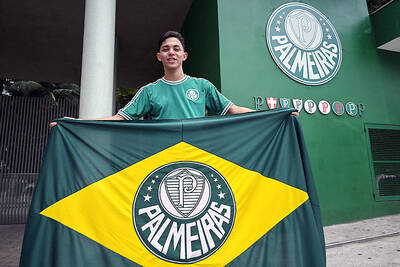
Brazil has four teams, more than any other country, in the expanded Club World Cup that kicked off yesterday in the US, but for SE Palmeiras, the competition holds a special meaning: winning it would provide some redemption. Under coach Abel Ferreira since 2020, Palmeiras lifted two Copa Libertadores titles, plus Brazilian league, cup and state championships. Even before Ferreira, it boasted another South American crown and 11 league titles. The only major trophy missing is a world champions’ title. Other Brazilian clubs like Fluminense FC and Botafogo FR, also in the tournament, have never won it either, but the problem for Palmeiras
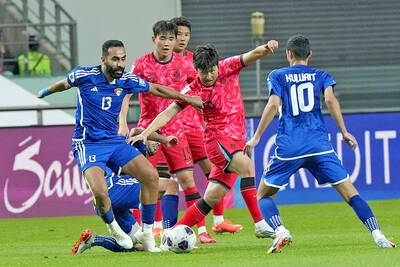
Paris Saint-Germain’s Lee Kang-in has pleaded with South Korea fans to get behind the team at the 2026 FIFA World Cup after more boos were aimed at coach Hong Myung-bo despite leading them to qualification. South Korea reached next year’s finals in North America without losing a game, but that does not tell the whole story. The country’s soccer association has been in the firing line, having scrambled about to find a successor after sacking the unpopular Jurgen Klinsmann in February last year. They eventually settled on Hong, the decorated former skipper who had an unsuccessful stint as coach in 2013-2014, during which

Lionel Messi drew vast crowds and showed flashes of his brilliance when his Inter Miami side were held to a goalless draw by African giants Al-Ahly as the revamped FIFA Club World Cup got off to a festive start on Saturday. Fans showed up en masse for the Group A clash at the Hard Rock Stadium, home to the NFL’s Miami Dolphins, but Messi could not fully deliver, his best chance coming through a last-second attempt that was deflected onto the crossbar. Inter Miami next face FC Porto on Thursday in Atlanta, while Al-Ahly, who benefited from raucous, massive support, are to
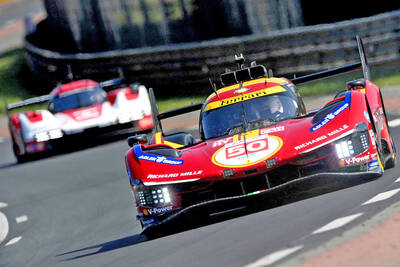
Ferrari’s F1 fortunes might be flagging, but the Italian team start this weekend’s 24 Hours of Le Mans as favorites, targeting a third consecutive triumph in motorsport’s fabled endurance classic. Roger Federer is acting as celebrity starter with the tennis icon getting the 93rd edition of the jewel in four-wheeled endurance racing’s crown under way tomorrow. Twenty-four hours later, through daylight, darkness and dawn, the 21 elite hypercars are to battle it out over 300 laps (more than 4,000km) in front of a sold-out 320,000 crowd burning the midnight oil with copious quantities of coffee and beer. Ferrari made a triumphant return after